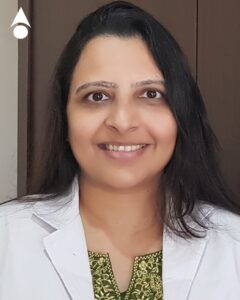January is Glaucoma Awareness Month: more awareness on the risk factors and symptoms, early screening, and increasing the reach of specialized care to peripheral locations is important to bring down the burden
by Suman Gupta
 Bengaluru, January , 2022: Glaucoma refers to a group of potentially blinding eye disorders. It occurs when the pressure inside the eyes (intraocular pressure or IOP) increases enough to damage the optic nerves. As the optic nerves that are responsible for sending images to the brain are affected, it results in vision loss. If left untreated, glaucoma can result in permanent irreversible blindness.
Bengaluru, January , 2022: Glaucoma refers to a group of potentially blinding eye disorders. It occurs when the pressure inside the eyes (intraocular pressure or IOP) increases enough to damage the optic nerves. As the optic nerves that are responsible for sending images to the brain are affected, it results in vision loss. If left untreated, glaucoma can result in permanent irreversible blindness.
Glaucoma is one of the leading causes of blindness especially for people over the age of 60 years. There are about 80 million glaucoma patients in the world. In India, nearly 12 million are affected by glaucoma. But like in many developing countries, about 50-80% of glaucoma cases go undetected in India. Hence the numbers in the records do not reveal the real picture. However, in line with the global trends, the population of glaucoma patients in the country is expected to double by 2040.
Talking about the signs and symptoms of glaucoma, Dr. Neelima Aalap Shah, Consultant – Ophthalmologist, Dr Agarwals Eye Hospital, Bengaluru, said that they vary depending on the type and stage of the condition. Usually, the first symptoms of glaucoma are seeing halos or rainbow-colored circles around lights or having unusual sensitivity to light. Loss of peripheral or side vision is another common symptom. However, most people with glaucoma have no early warning signs. The effect is so gradual that people may not notice any change in vision until the condition progresses to an advanced stage. Hence, the only way to find out if you have glaucoma is to get a comprehensive eye exam, including dilation.
January is observed as the Glaucoma Awareness Month worldwide. As a part of it, Dr Agarwals Eye Hospital is conducting various awareness programmes through its pan-India network.
According to Dr. Neelima Aalap Shah, Dr. Agarwals Eye Hospitals, the risk factors for glaucoma may include the increasing prevalence of chronic conditions like:
-
Diabetes
-
Cardiovascular diseases
-
High blood pressure
-
Myopia
-
Family history may also play a major role

